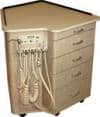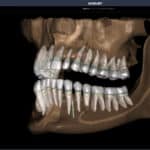by KELLY MURRAY
How proper maintenance can extend the life of your instruments
Prolonging the life of pliers is an ongoing challenge for orthodontic offices. I am sure that having dull pliers is a top complaint for every orthodontic assistant. There are countless examples of procedures that go wrong because of dull or locking pliers.

A Plier Person

The Solution Solution
We use a no-rinse ultrasonic solution, which is very good for the pliers’ joints and finish. The solution contains rust inhibitors and lubricants to prevent rusting and stiffness of the joints of the pliers. It is also very important to use the correct amount of solution. If you add too much solution, the mixture is slimy and cloudy. If you don’t add enough solution, the pliers are not protected by the rust inhibitors or the desperately needed lubricants. Read and follow the solution’s exact measurements.
We mix the solution with distilled water, because regular tap water contains minerals and other rust-inducing and joint-locking agents. Before we switched to distilled water, the pliers were rusting and the joints were locking even though we were using the best ultrasonic solution we could find. Some offices are lucky enough to have a reverse-osmosis system in the office. This cuts down on the cost of weekly purchases of distilled water from a service, which can add up, since it takes 3 gallons of distilled water to fill the ultrasonic tank. That works out to be 15 gallons of distilled water used per week. Another money-saving alternative is to have a distiller installed in the office.
Timing is Everything
The next important step is to run the instruments through the ultrasonic for no more than 15 minutes. If you leave a batch in the solution over your lunch break, you are just asking your pliers’ joints to lock up or for rust to start forming. Be sure that you dump the instruments out of the ultrasonic before your lunch break and before going home at the end of the day.
The rule in my office is the last person out of the sterilization area empties the instruments and then drains the solution, and then the first person in the next morning fills the tank and reprocesses the leftover instruments from the day before. The solution is changed daily to maintain the potency of the rust inhibitors and lubricants—and because the solution looks really dirty at the end of the day. The pliers are then dumped out onto a very absorbent towel, are dried very thoroughly, and are racked for the dry-heat sterilizer.
We take one more step to ensure that the joints are not going to get stiff. I found that the pliers were locking even after using the distilled water and the right ultrasonic solution, so now we apply a nonsilicone instrument lubricator to all the open joints on the pliers while they are on the rack. The overspray is wiped off the handles to prevent them from getting dull and sticky. They are then placed in the dry-heat sterilizer for sterilization.
We started using this instrument lube for extra protection of the plier joints, and this has almost eliminated the problem of locking and stiffening of the joints, so now we can get more usage out of the pliers before sending them to be reconditioned.
Maintaining the Edge
The next thing we do is make sure that the sterilizer is maintained and checked for proper temperature at least once per year. The cycle timer and duration of the cycle is checked, too. This is really important, because the pliers will stay sharp longer when they are not exposed to undue heat. The “high heat” time should be only what the sterilizer type and brand recommends. We also spore-check our dry-heat sterilizer once per week to make sure the heat is being evenly distributed, that there are no hot spots, and that all the instruments are being properly sterilized.

Service With a Smile
It is very important to acquire the knowledge and trust of a plier service. Our office uses a great reconditioning service. What makes it great is that it is a small company. The owner almost always answers the phone himself, and he has time for my endless questions and complaints about why we have such great pliers that have gone dull. I have a great relationship with my pliers guy, and he makes me feel that I am his only client. This personal service has been absolutely invaluable. He is also the one responsible for putting the office on the strict plier regimen that I have just described.
My orthodontists are very particular about the office pliers and demand answers when they do not work properly. My pliers guy has saved me from the wrath of the orthodontists many times.
The Last Word
I hope that these tips will be useful to your practice. The routine that our office uses has increased our pliers’ life and decreased the number of bad situations in which we have had to deal with dull or locking pliers. We almost never have any situations where brackets are flying off, wing tips are breaking, or (the worst) distal end wires are bending instead of being cut. By keeping to our pliers regimen, we save the office money and make our jobs easier.
Kelly Murray has been working in orthodontics for 16 years and is currently an orthodontic assistant for David Vaughn Bates, DDS, and Mark F. Maxwell, DDS, MS, in Newport Beach, Calif. She can be reached at (949) 640-0203.










